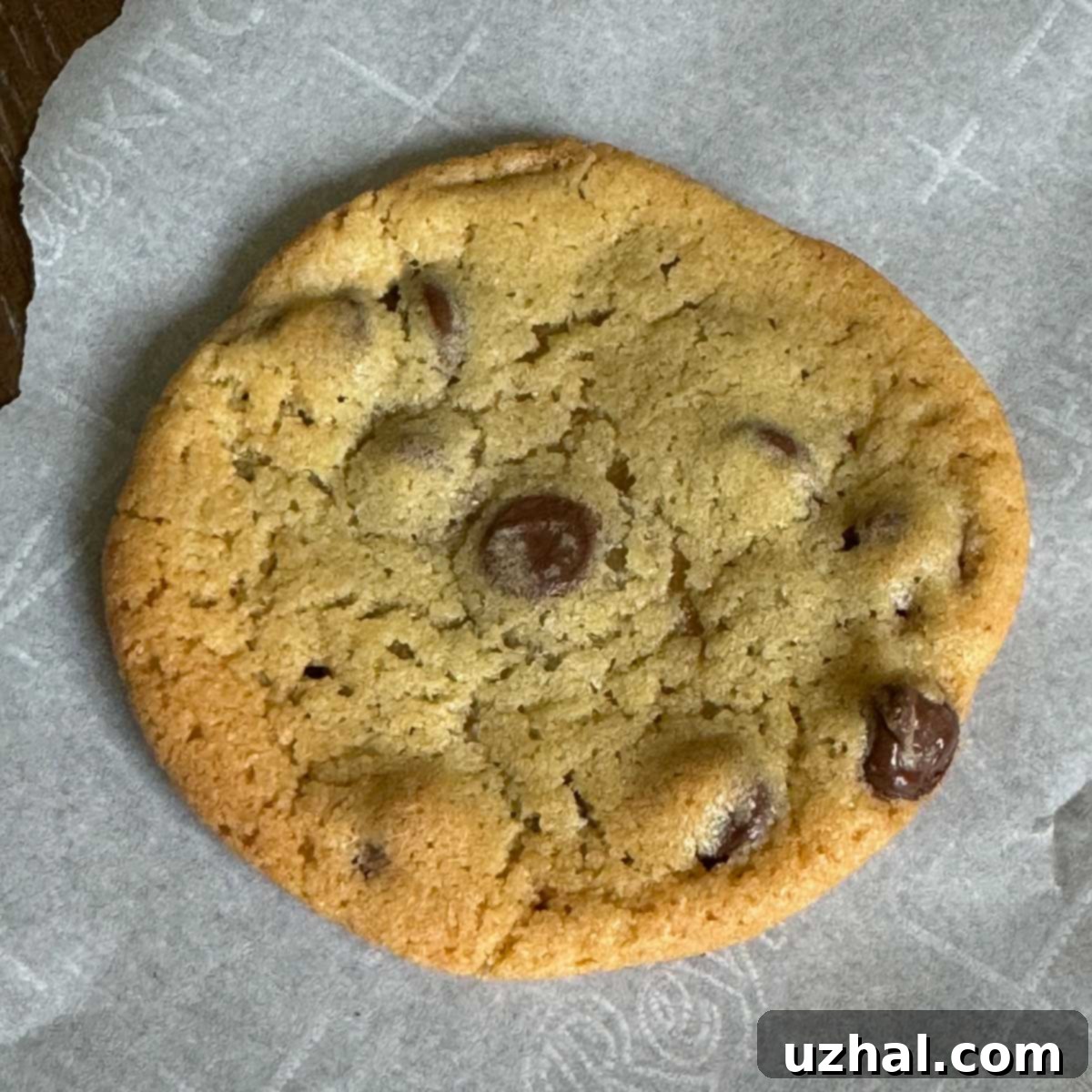Mastering Johnny Iuzzini’s Killer Chocolate Chip Cookies: The Ultimate Chewy, Flavorful Recipe
For those who believe there’s always room for another exceptional chocolate chip cookie recipe, you’ve come to the right place. Today, we’re diving deep into a remarkable creation from Johnny Iuzzini’s acclaimed cookbook, Sugar Rush. While this recipe might have flown under the radar for some when it first debuted, its unique qualities make it truly stand out in a sea of chocolate chip cookie contenders. After countless baking experiments with similar ingredient ratios, I was initially skeptical, yet these cookies proved to be a subtle but significant upgrade, offering a truly “killer” experience.
What sets these particular chocolate chip cookies apart? It’s a delightful combination of thoughtfully balanced flavors and an absolutely irresistible texture. Infused with delicate notes of cinnamon and a hint of almond extract, they offer a sophisticated twist on the classic. The texture is a dream: perfectly chewy with an abundance of charming cracks and crevices on the surface, promising a satisfying bite every time. Interestingly, despite their distinct flavor profile, they evoke a nostalgic resemblance to McDonald’s chocolate chip cookies, particularly in their satisfying chewiness once cooled. This article will guide you through the nuances of creating these extraordinary cookies, ensuring you achieve bakery-quality results right in your own kitchen.

The Art of Gentle Mixing: Why Less is More for Perfect Chocolate Chip Cookies
My rendition of Johnny Iuzzini’s recipe stays remarkably true to his original vision, particularly in one crucial step: the mixing of butter and sugars. Unlike many recipes that call for vigorous beating until light and fluffy, Iuzzini instructs to simply mix the ingredients until combined, avoiding excessive aeration. This seemingly minor detail is incredibly important and plays a pivotal role in the final texture of these killer chocolate chip cookies.
Here’s why gentle mixing is key: This particular cookie dough contains a generous amount of leavening agents (baking soda and baking powder). If you beat too much air into the butter and sugar mixture, these air pockets will cause the cookie dough balls to rise too quickly in the oven. While a rapid rise might sound appealing, it often leads to a rapid fall, resulting in cookies that spread *too* much and become excessively flat and brittle, losing that desirable chewy quality. Moreover, less beating means more undissolved sugar crystals remain in the dough. These undissolved sugar crystals help to limit spreading during baking, contributing to a thicker, chewier cookie with those characteristic cracks and crevices that we adore. Given the substantial sugar content in this recipe, the dough naturally has a tendency to spread, so blending the ingredients together on a low speed or even by hand with a wooden spoon or heavy scraper is highly recommended. The beautiful cookies captured in all the accompanying photographs were mixed exclusively by hand, demonstrating the effectiveness of this simple technique. So, resist the urge to power up your mixer on high, and embrace the gentle approach for superior results.
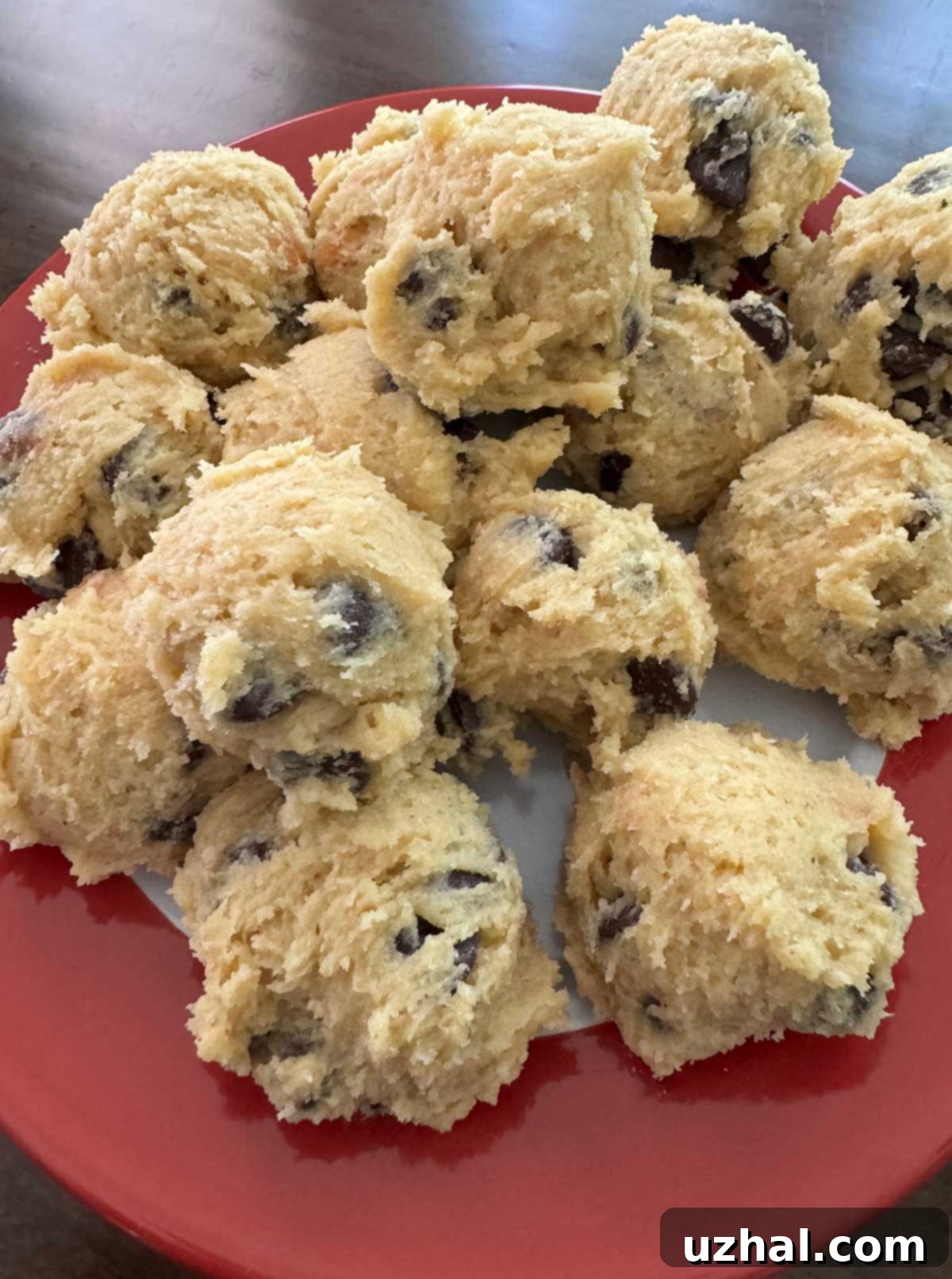
Elevating Flavor and Texture with High-Fat Butter
Another subtle but impactful adjustment that I found significantly enhanced these killer chocolate chip cookies was the use of a higher-fat butter. When you examine the recipe’s proportions, you’ll notice a considerable amount of flour and sugar relative to just one cup of butter. In such a scenario, that small percentage of extra butterfat, typically found in European-style butters, can make a remarkable difference. This added fat contributes a luxurious richness and depth of flavor that a standard butter might not deliver, creating a more indulgent and satisfying cookie.
For the batch featured here, I opted for Vital Farms butter, known for its higher butterfat content and superior flavor. Other excellent choices for achieving similar results include Plugra or President brand butters. These European-style options are churned to contain a higher percentage of butterfat (around 82-84%) compared to typical American butters (around 80%). While any good quality butter will undoubtedly yield delicious cookies, experimenting with a high-fat variety can truly elevate the experience, particularly in recipes where butter is a star ingredient. The subtle difference in butterfat can influence not only the taste but also the overall mouthfeel and texture, contributing to that desirable chewy quality and rich aroma.
A Symphony of Flavors: Cinnamon, Almond, and Optional Indulgences
Now, let’s talk about the unique flavor profile that makes these chocolate chip cookies so captivating. The combination of almond extract and cinnamon works in perfect harmony, enhancing the overall taste without overpowering the classic chocolate chip essence. The almond extract lends a delicate, nutty undertone, adding a layer of sophistication that distinguishes these cookies from your everyday batch. The cinnamon provides a warm, comforting spice that complements the chocolate beautifully.
While Johnny Iuzzini’s original recipe calls for a full ½ teaspoon of cinnamon, I found that a tiny bit less worked perfectly for my palate, ensuring the spice was present but not dominant. However, even with the full ½ teaspoon, these cookies are unlikely to be overly cinnamon-y, striking a delightful balance. Beyond these core flavorings, I introduced two optional elements that further elevate the experience: a handful of caramel chips mixed into the dough and a sprinkle of smoked Maldon sea salt on top before baking. The caramel chips melt into pockets of buttery, sweet goodness, adding another dimension of texture and flavor. Any good quality sea salt will work for topping, but the smoked Maldon sea salt is a game-changer. Its distinct smoky aroma and subtle crunch provide an unexpected yet incredibly delicious contrast, adding a complex layer of flavor that tantalizes the taste buds. You can easily order smoked Maldon sea salt online or find it at specialty food stores like The Fresh Market.
Achieving the Perfect Chewy Texture Every Time
The hallmark of these cookies is their wonderfully chewy and soft texture, which, as with any baking, can be influenced by your baking method. While I typically prefer not to under-bake cookies to achieve chewiness, I experimented with one batch, pulling them from the oven a little early. The result was indeed delicious – incredibly soft and doughy. However, I found that baking them a little longer, allowing for more browning around the edges, still yielded a remarkably chewy interior. This flexibility means you can tailor the bake time slightly to your preferred level of chewiness without compromising on taste or overall quality.
Among all the baking trials, the best results for these killer chocolate chip cookies were consistently achieved when baked on a baking stone. The stone provides even heat distribution, promoting a uniform bake and contributing to that desirable chewy texture and beautiful cracked surface. The cookies pictured, with their deep golden edges and inviting fissures, represent one of the “more baked” batches, demonstrating that a longer bake doesn’t necessarily mean a loss of chewiness, but rather a richer flavor and a more structured cookie. Regardless of your baking surface, aiming for a golden-brown edge with a slightly softer center will usually give you that ideal chewy result.
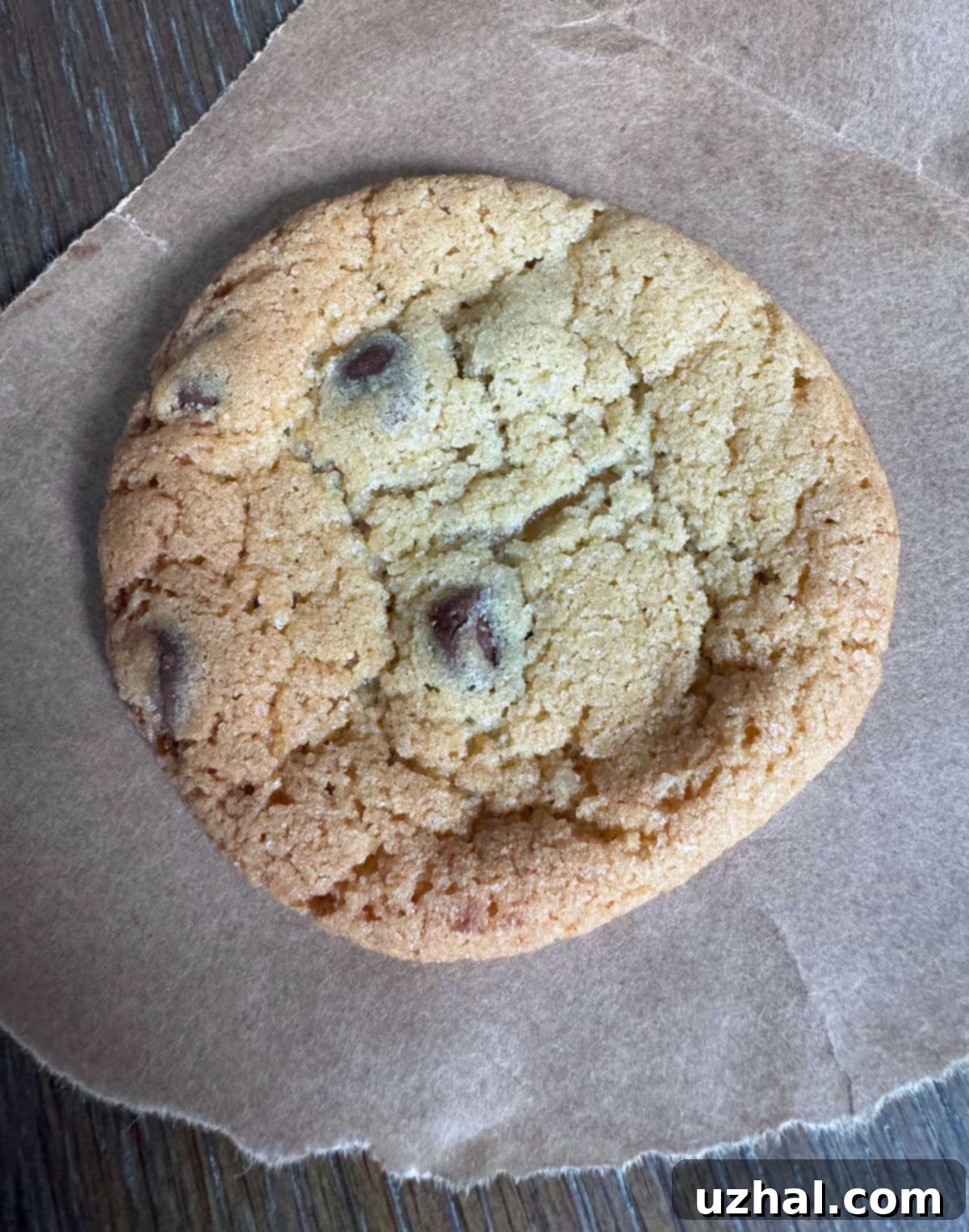
The Secret Weapon: Baking Killer Chocolate Chip Cookies on a Stone
While you can certainly bake these exceptional chocolate chip cookies on a standard baking sheet, for those seeking to truly elevate their baking game, a baking stone is an invaluable tool. If you have access to one, I highly recommend trying this method: preheat your baking stone in the oven, then place your cookie dough balls on a sheet of parchment paper and carefully slide the parchment (with the cookies) onto the hot stone. This technique offers several distinct advantages that contribute to the superior quality of these cookies.
Firstly, baking on a stone significantly reduces the risk of burnt undersides, a common frustration for many home bakers. The stone’s consistent, radiant heat cooks the cookies more evenly from the bottom up, preventing scorching while allowing the tops to achieve that perfect golden hue and signature cracked appearance. Beyond preventing burns, baking cookies on a stone—or even on an inverted baking sheet, which mimics some of the stone’s benefits—results in cookies that are noticeably “bendier” and more uniformly chewy. This enhanced flexibility and desirable texture come from the stable, high heat transfer from the stone, which helps to set the cookie’s structure without overcooking the interior. These particular cookies were no exception; baking them on a stone truly brought out their best qualities, making them incredibly satisfying to eat. If you’re serious about achieving consistently chewy and beautifully textured chocolate chip cookies, investing in a baking stone, or at least trying the inverted baking sheet trick, is a worthwhile endeavor.
A Nod to Nostalgia: McDonald’s Chocolate Chip Cookies Connection
Let’s address the elephant in the room – the uncanny resemblance of these cookies to McDonald’s chocolate chip cookies. I know many of you harbor a not-so-secret affection for those iconic fast-food treats. If you’ve been on a quest for a copycat McDonald’s cookie recipe, Johnny Iuzzini’s killer chocolate chip cookies offer a delightful approximation, especially in their texture once cooled. The chewiness and the way they hold their shape after baking are strikingly similar, triggering a pleasant sense of nostalgia.
However, it’s important to note that the flavor profile isn’t an exact match. McDonald’s cookies are renowned for their pronounced brown sugar flavor, which contributes significantly to their distinct taste. Our recipe, with its nuanced additions of almond extract and cinnamon, provides a different, arguably more sophisticated, flavor experience. But if you’re determined to lean closer to that McDonald’s-esque caramel note, there’s a fantastic trick: chill your cookie dough for a day or two before baking. This extended chilling period allows the flavors to meld more deeply and encourages a more robust Maillard reaction during baking. The Maillard reaction is a chemical process between amino acids and reducing sugars that gives browned food its distinctive flavor, and in cookies, it translates to richer, more complex caramel notes that will bring you even closer to that beloved McDonald’s taste, enhancing the overall depth and complexity of your homemade killer chocolate chip cookies.
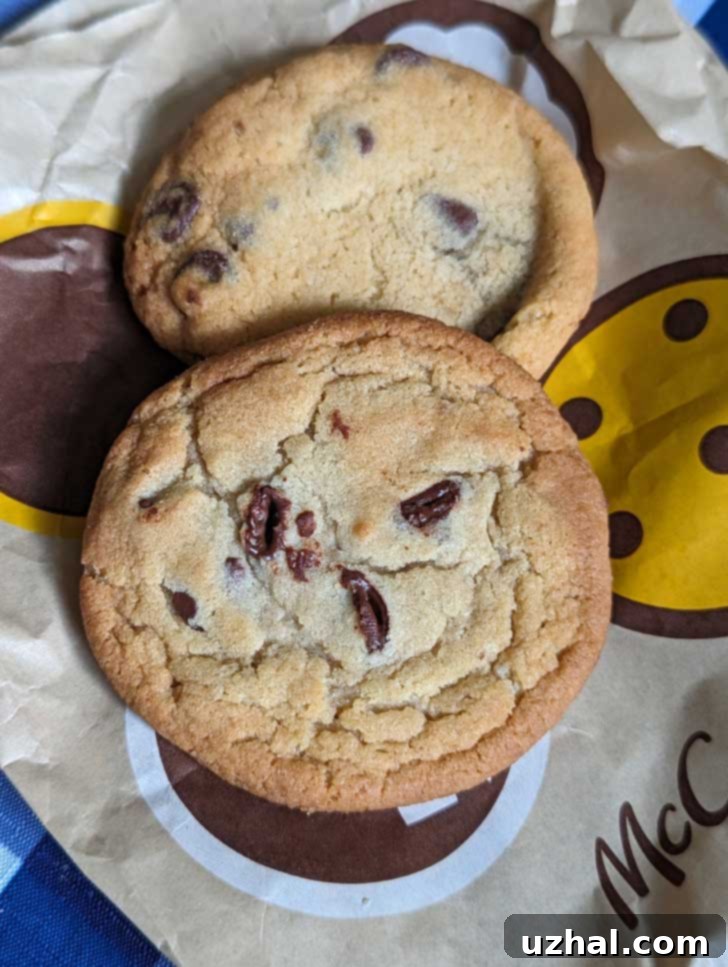
We genuinely hope you’re inspired to try this exceptional recipe for Johnny Iuzzini’s killer chocolate chip cookies. They offer a unique blend of familiar comfort and gourmet sophistication, promising to become a new favorite in your baking repertoire. For more incredible recipes from Johnny Iuzzini and Wes Martin, you can explore their wonderful book here.
- White Pizza
- Best Key Lime Pie
- Stone Age Bread Crackers
- Cracked Top Brown Sugar Cookies
- Olive Oil Chocolate Chunk Cookies
Recipe
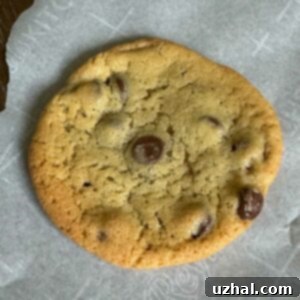
Killer Chocolate Chunk Cookies
Anna
Pin Recipe
Ingredients
- 2 cups Gold Medal unbleached all-purpose flour (255 grams)
- 1 cup cake flour (115 grams)
- 1 teaspoon baking soda
- 1 teaspoon baking powder
- ¾ teaspoon salt (Morton kosher) or 1 ½ teaspoons Diamond
- ¼ teaspoon cinnamon (original calls for ½ teaspoon)
- 2 sticks unsalted butter, cut into chunks and softened but still cool (228 grams)
- 1 cup light brown sugar, packed (200 grams)
- 1 cup granulated sugar (200 grams)
- 1 large egg
- 2 large egg yolks
- ¾ to 1 teaspoon natural vanilla extract
- ¼ teaspoon almond extract
- 2 cups semisweet or dark chocolate chips
- ½ cup caramel chips (optional)
- Sea salt or smoked sea salt for topping (optional)
Instructions
-
Thoroughly mix the flours, baking soda, baking powder, salt and cinnamon in a bowl. Set aside.
-
Using a mixer fitted with paddle attachment or using a wooden spoon or heavy scraper, beat the butter and sugar together on low until mixture forms a thick paste. Beat in the extracts.
-
Add egg and the yolks, one at a time, mixing just until blended.
-
Add flour mixture and stir just until blended. When flour is incorporated, stir in the chocolate chips.
-
Using a medium size cookie scoop, scoop balls of dough onto a dinner plate. You can cover them with plastic and chill or bake right away.
-
When ready to bake, preheat oven to 350 degrees F. If using a convection oven, you might want to go with 335 degrees F which is what I used.
-
Line a baking sheet with parchment paper and arrange however many of the cookies you want to bake on the tray spacing 2 ½ inches apart.
-
Press the tops down slightly with the bottom of a glass and sprinkle tops with a little Maldon sea salt if desired.
-
Bake for 12-13 minutes. Let cool on the baking sheet for 5 to 10 minutes and then transfer to a cooling rack to finish cooling.
-
To bake on a stone, put the dough balls on a sheet of parchment and slide (you can use a pizza peel or awkwardly lift) the parchment and place it on the preheated stone. Bake for 12-13 minutes or until cookies appear cracked and fully baked.
